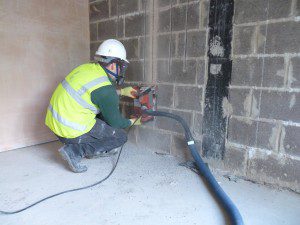A new initiative has been launched in the fight to tackle health problems associated with construction workers breathing in dust.
Supported by the Health and Safety Executive, the industry has launched the Construction Dust Partnership (CDP), a network of partners committed to tackling this serious issue, which can result in permanent disability and early death.
The CDP brings together key stakeholders across the construction industry with representation from manufacturers, suppliers, contractors, designers, training bodies and workers. This partner-led initiative harnesses the collective power of all those involved to raise awareness across the industry, drive improvements forward and encourage behaviour change through joint initiatives.
Sally Clayton, Product and Procurement Manager at Arco, said, “Improving worker safety is at the forefront of Arco’s company ethos. The Construction Dust Partnership offers the opportunity for us to collectively raise awareness of construction dust as a significant risk to long term health. Site safety isn’t just about achieving an incident and accident-free work environment, it’s also about eliminating and minimising the occupational health risks that people face as a result of simply carrying out their day job. This will ensure that we continue to maintain a safe and healthy workforce now and in the future.”
Projects to date include a series of toolbox talks, road shows, posters, and educational resources which are available to access at a dedicated section of the CITB website.
Lee Fisk, CITB Environment, Safety and Health Strategy Manager, added, “Raising awareness of the devastating effects exposure to construction dust has on workers and their families and providing advice on effective control measures is vital to the wellbeing of individuals and the industry.”
Construction dust includes silica, wood and other dusts (e.g. gypsum from plasterboard). The effect of inhaling these highly hazardous particles can result in severe and irreversible respiratory illnesses such as occupational asthma, lung cancer silicosis and COPD (Chronic Obstructive Pulmonary Disease).
Builders and tradesmen carrying out jobs including cutting paving slabs or roof tiles, wall chasing, grinding, sanding and sweeping are all at risk if control measures are not in place and the correct protection is not worn. Currently, over 500 construction workers are believed to die each year as a result of exposure to silica dust alone. However, the long latency of diseases associated with construction dust exposure means that managing and controlling this risk is often misunderstood or overlooked until it is too late.
Heather Bryant, HSE Chief Inspector of Construction, said, “The construction sector has made good progress in reducing the number of people killed and injured by its activities. Just as importantly, we need to tackle where workers are unnecessarily being exposed to serious health risks, such as silica dust, which can have fatal or debilitating consequences.”












